I don’t know if this bird was clumsy because it was a juvenile, clumsy by nature or this was an isolated event.
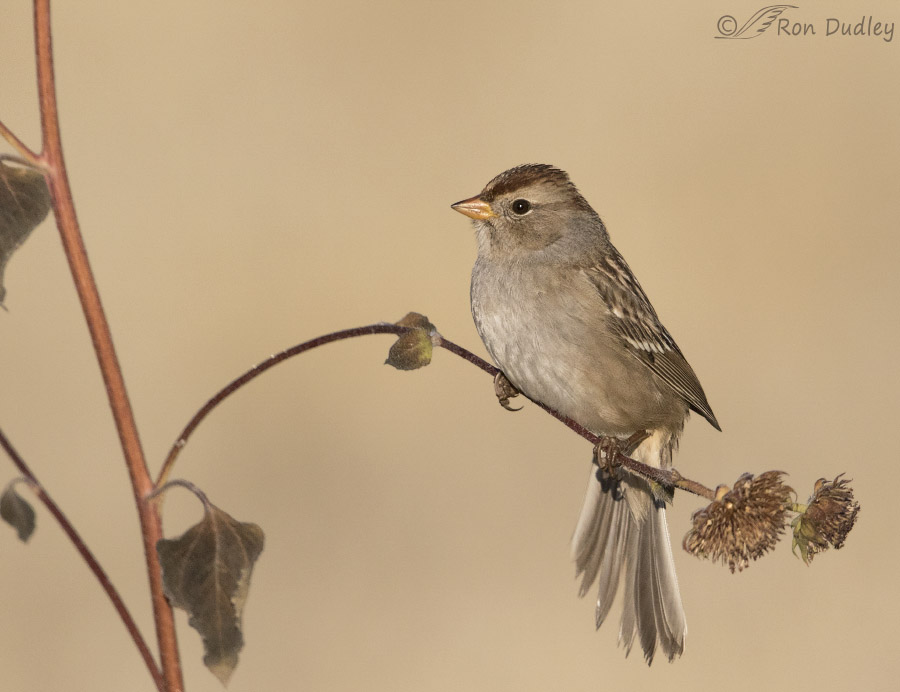
1/6400, f/6.3, ISO 800, Canon 7D Mark II, Canon EF 500mm f/4L IS II USM + EF 1.4 III Extender, not baited, set up or called in
I photographed the sparrow on Antelope Island four days ago as it and others were trying to pluck sunflower seeds from seed heads blowing in the breeze. These stems aren’t very stable to begin with but throw in a slight wind and things get tricky.
As you can see from its fanned tail the bird is already having trouble maintaining its balance.
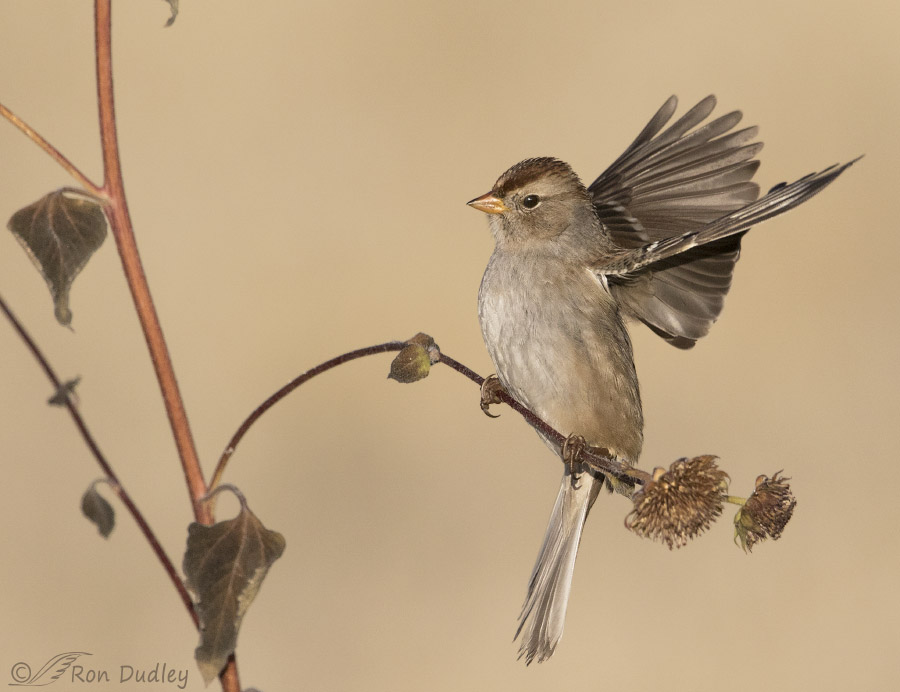
1/8000, f/6.3, ISO 800, Canon 7D Mark II, Canon EF 500mm f/4L IS II USM + EF 1.4 III Extender, not baited, set up or called in
Then it started to teeter over backwards and had to catch itself with its wings.
1/8000, f/6.3, ISO 800, Canon 7D Mark II, Canon EF 500mm f/4L IS II USM + EF 1.4 III Extender, not baited, set up or called in
It almost became stable again but the rocking and swaying of the perch…
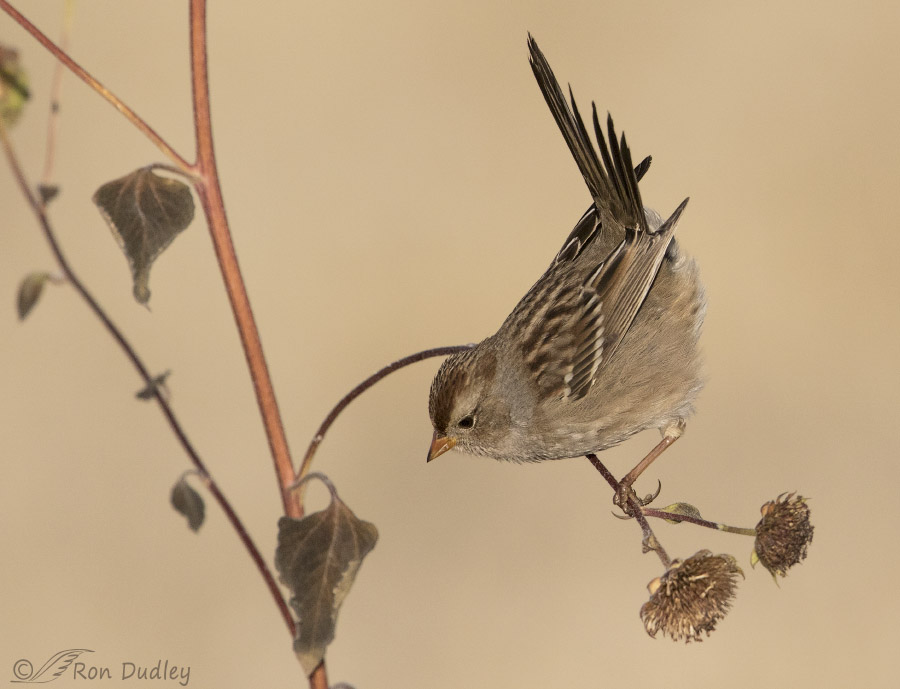
1/8000, f/6.3, ISO 800, Canon 7D Mark II, Canon EF 500mm f/4L IS II USM + EF 1.4 III Extender, not baited, set up or called in
caused it to lurch forward and this time…
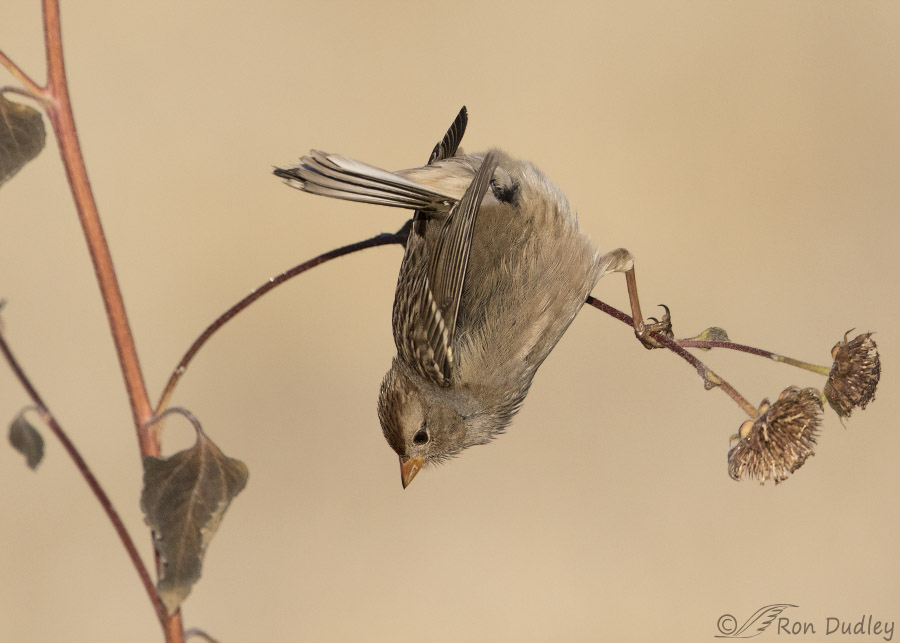
1/6400, f/6.3, ISO 800, Canon 7D Mark II, Canon EF 500mm f/4L IS II USM + EF 1.4 III Extender, not baited, set up or called in
it couldn’t recover and lost both its balance and its dignity as it struck a typical wren pose for an instant before…
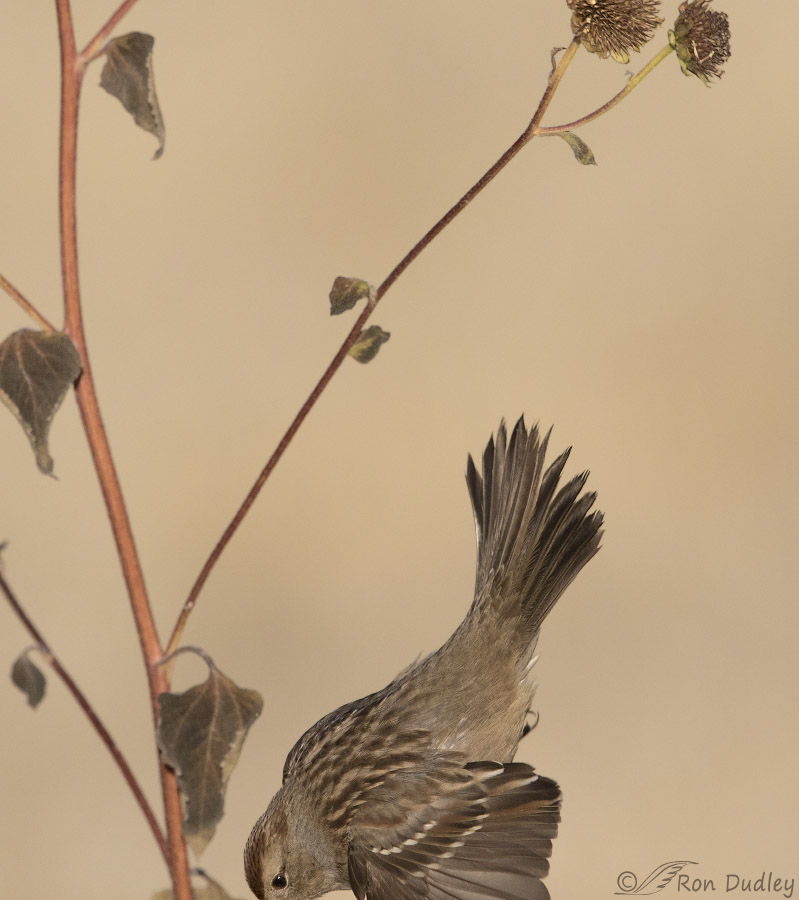
1/6400, f/6.3, ISO 800, Canon 7D Mark II, Canon EF 500mm f/4L IS II USM + EF 1.4 III Extender, not baited, set up or called in
doing an unintended nosedive off the perch without ever getting at the seeds at the end of the stalk. I cut off part of the bird but you get the picture. I cropped this image as I did so you could see how far the flower stem sprang back up after losing the weight of the sparrow.
Birds often have difficulty balancing on perches but this was the first time I’ve photographed one actually falling off and I’ll admit that my warped sense of humor enjoyed it immensely.
Nothing serious here, just a little whimsy for your Saturday morning.
Ron
Note to photographers: Once again I have very high shutter speeds – higher than I needed for the situation. At this location birds of several species are flitting around feeding on sunflower seeds and they very quickly go into and out of bright and dim light, especially in the early morning when shadows are long and deep. I’m always trying to get action shots so for small birds like this I try to have an absolute minimum of 1/2500 sec shutter speed (1/3200 is better). But since I shoot in aperture priority my shutter speed changes with the light and I usually don’t have time to make instantaneous camera adjustments so I often have more SS than I need (too much is infinitely better than too little).
That’s my story and I’m sticking to it.


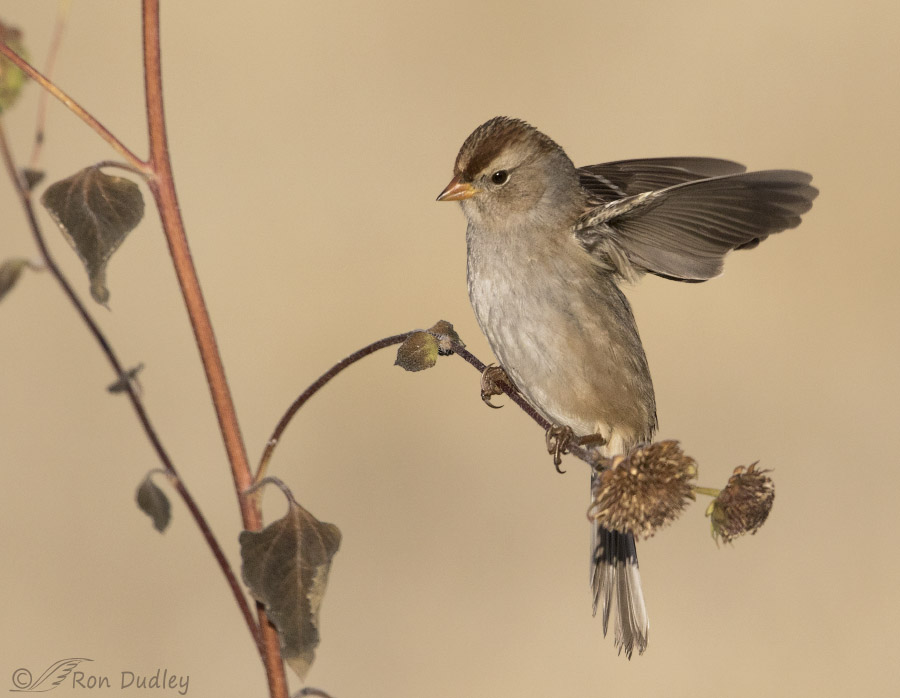
Your post title worried me a little today. ‘Falling off the perch’ means dying in the idiom I grew up with. And that poor sparrow’s pride did die a nasty death. All because you were watching…
EC, sometime you’ll have to give me a lesson on “Oz-speak”. You were my first exposure to many of those words and phrases used in the context Australians often use them. Quite an education for me.
Our use of language is frequently weird. I think dropped off the perch originated in the UK. I certainly remember my British mother using it.
Such a cutie. Funny how the birds face went from peaceful to annoyed. I finally heard the White Crowns singing away this morning. They have arrived!
Sounds like you enjoy your White-crowned as much as I do mine, Jean.
Love these! The composition is amazing in all of them. The last one looks like some of mine. Only a lot sharper! Lot’s of fun.
Lot’s of fun.
The last part of your comment made me smile, Joanne.
Poor little guy ! and after you caught him in an absolutely exquisite composition in #1—-reminded me of some Japanese prints I’ve admired……
I really liked that comp too, Kris. Thanks.
My crow, Corby, teetered like that when he was learning to fly and would land awkwardly on something too thin and springy…he seemed annoyed at our laughter. Really enjoyed this cute series…wonder if the stalk he landed on was a little too springy….
I’ll bet a crow would be smart enough to actually BE annoyed in that situation, Patty. Thank you.
Fun series — for us, not the bird. Poor little guy. I feel sorta bad for giggling at his misfortune. Then I imagine him landing, saying out loud to whomever is listening, “I meant to do that!” and striking Molly Shannon’s SNL Superstar pose. (Man, I gotta get a hobby besides anthropomorphising birds! )
)
As for your shutter speed: if it ain’t broke, don’t fix it!
I like your present hobby, Marty – you do it well. Not to worry – I’ll continue with aperture priority and relatively fast shutter speeds. They work for me, at least sometimes…
Great shots Ron. Everyday is an experience for these immatures, like watching your own children as they learn to walk and balance. We all go through it, fun to watch. Probably more to the experience of kids learning to bike on a two-wheeler.
I have Goldfinches working thistle and cone flowers, a tad sturdier stems, but still fun to watch.
Thanks for sharing.
Dick, I learned a lot about the learning curves facing young birds when I spent so much time with those Red-tailed Hawk chicks this past summer.
Great series Ron!
Charlotte
Thanks, Charlotte.
Thanks for a good laugh this morning. I guess my sense of humor is warped, too. The whole thing sounds like the poor little guy was not experienced in dealing with winds.
Susan, the wind wasn’t blowing very hard but on these spindly stalks it was enough.
Hysterical! Gave me a lovely laugh for the morning.
Good!
I’ve definitely had days like this! I love the setting, and how you captured the eye light in each of these.
Don’t we all (have days like this)! Mine are coming more often these days…
What a fun series! I have occasionally seen juvenile cardinals go tail feathers over tea kettle, so to speak; seeing the process captured like this gave me a good laugh. Not sure what the background is, but it lends a distinctly “painterly” look to these shots.
Tail feathers over teakettle — what a great descriptor!
I like that descriptor too, Robyn. The background is dried grasses in warm morning light.
Thanks, Ron.
Cute series Ron. The juveniles do have a learning curve for sure! Too much shutter speed IS better than too little in aperture priority anyway – have had a few “black” photos trying to use shutter priority at times…………… Learning curve there also!
The juveniles do have a learning curve for sure! Too much shutter speed IS better than too little in aperture priority anyway – have had a few “black” photos trying to use shutter priority at times…………… Learning curve there also! 
“have had a few “black” photos trying to use shutter priority at times”
That’s one of the reasons I stick with aperture priority, Judy – if I learn one system well and STICK to it I don’t make so many mistakes.
Nice story, and as always, great photos. Thanks Ron!
Thank you, Brian.